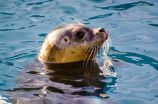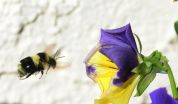A recently published special issue of the Journal of Heredity focuses on case studies of real-world applications of conservation genetics in Latin America, from nabbing parrot smugglers to exposing fraudulent fish sales.
The discipline of conservation genetics - the use of genetic techniques to further goals of conserving and restoring biodiversity - has been growing for at least four decades. But only relatively recently have genetic techniques been used not just to understand conservation problems, but to solve those problems as well. The application of genetic techniques is increasingly important in Latin America, where vast biodiversity is being degraded by inexorable economic development.
"Latin America has an unusual level of biodiversity, and is also undergoing unprecedented development, making the region of particular conservation concern," said Dr. Kathryn M. Rodriguez-Clark, one of the editors of the special issue. "But these factors also contribute to the growth of a scientific community able to provide real help, given the right support."
That support began a decade ago with the establishment of La Red de Genética para la Conservaci?n (ReGeneC, or in English, The Conservation Genetics Network). ReGeneC provides an annual intensive course in conservation genetic techniques and applications for South American students and researchers. ReGeneC's work thus far culminated in a conference in Caracas, Venezuela in May 2014; many of the projects presented there are described in the papers in this Journal of Heredity special issue.
The special issue includes fifteen papers highlighting the use of genetic techniques to address problems in the conservation of Latin American biodiversity, ranging from trees to toads to tamarins.
One article in the issue describes the population structure - or lack thereof - of jaguars in the Brazilian Pantanal, the largest tropical wetland in the world. Researchers used DNA analysis of blood samples to characterize genetic diversity and population structure of 52 jaguars sampled in four locations in the Pantanal, a large and relatively pristine ecosystem. They found a high degree of genetic diversity among individuals, indicative of a single, unfragmented (and therefore healthy) population. Samples collected over similar spatial scales in the Atlantic Forest, a 4,000 km2 ecosystem on the Atlantic coast of Brazil, told a different story. Jaguars in that ecosystem have recently become divided into multiple subpopulations because of habitat fragmentation; one of the subpopulations has now become extinct.
"Results from the Pantanal serve as a baseline of comparison for the Atlantic Forest jaguars, indicating that at the spatial scale studied, jaguar populations usually show genetic connectivity," explained co-author Dr. Eduardo Eizirik. "These results support the need for hands-on conservation of the species, and provide a baseline of undisturbed population structure."
Another study included in the special issue used DNA "barcoding" to identify an instance of attempted illegal smuggling of eggs from Brazilian parrots. A man caught in a Brazilian airport with 58 avian eggs claimed they were quail eggs but authorities suspected otherwise. The embryos did not hatch, ruling out morphological identification of hatchlings. Two DNA tests were conducted, both revealing that 57 of the eggs were parrots and one was an owl species. This kind of DNA sequencing can be a powerful tool to assist in criminal investigations and design of strategies to prevent wildlife smuggling.
"With these data the police could build a more precise scenario of this smuggling case," said co-author Dr. Cristina Miyaki. "This type of analysis could be adopted by wildlife authorities for detection of other rare species affected by smuggling, or for border control and monitoring of dispersal of invasive species," she added.
A third study focused on solving a two-fold problem of consumer fraud and a threat to the endangered pink river dolphin (boto) in the Brazilian Amazon. Brazilians will not knowingly eat the scavenger catfish Calophysus macropterus, called locally 'piracatinga,' considering it repulsive. This fishery is often carried out using flesh of river dolphins and caiman as bait. Around 2008, however, a new fish appeared in Brazilian markets, called 'douradinha.' This fish did not appear to correspond to any known Amazonian species. Researchers suspected that douradinha was actually piracatinga, renamed to mislead consumers and to avoid scrutiny of fishing practices that involve killing dolphins and caimans.
A team of scientists collected 62 'douradinha' samples from supermarkets and fish shops, and used DNA sequencing to determine the true species for each sample. More than 60% of samples sold as 'douradinha' were determined to be piracatinga, and the remaining samples were identified as other low-value scavenger fish species. Sequencing of stomach contents from two fish sampled confirmed the presence of river dolphin, presumably from bait used in the fishery. The fishery for piracatinga has now been shut down, in part thanks to the results of this study.
"Our work was fundamental in supporting the movement that led to banning douradinha. We showed not only that dolphins were being used as bait, but perhaps more importantly, that even changing the name from 'douradinha' to a new fictitious name will not work to circumvent the ban -- our technique will still be able to determine the true identity of the fish being sold," said Dr. Antonio Solé-Cava, one of the study's co-authors.
Rodriguez-Clark pointed out that many of the studies in the special issue do not use the most cutting-edge techniques available, which is part of their genius. "A big part of the problem in addressing conservation issues isn't technological, it's political, or economic, or cultural," she said.
"These scientists are all working on real-world problems. Sometimes the test of real ingenuity is knowing how to use the basic technology necessary to solve the problem, and doing it in just the right way."
INFORMATION:




